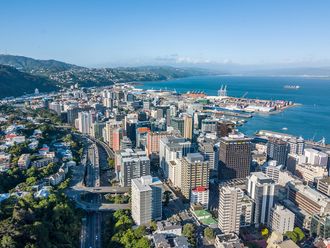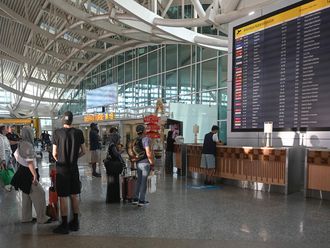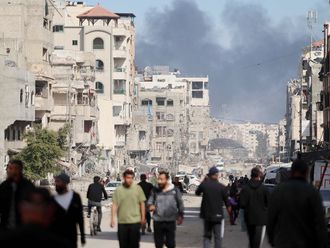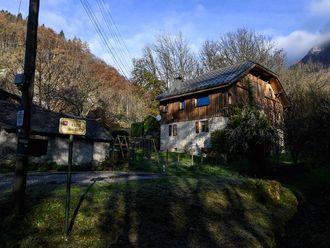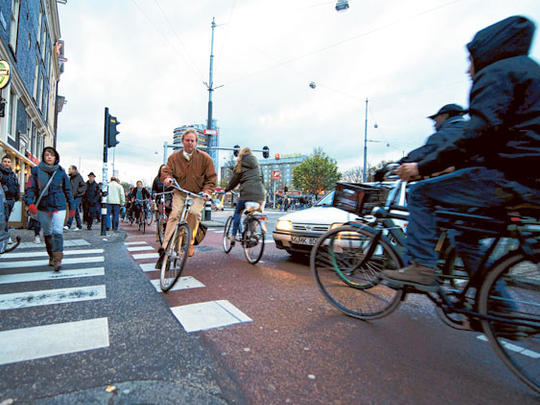
Amsterdam: Problems all-too familiar to car drivers the world over, from traffic jams to road-rage and lack of parking, are now also threatening to turn the Dutch dream of bicycling bliss into a daily hell.
In a small country where bicycles outnumber people by 1.2 million, the Dutch have simply run out of space to accommodate the five million cyclists who take to the road every day, turning commuting in major cities into a nightmare.
In Amsterdam alone 490,000 freewheeling “fietsers” take to the road to cycle a staggering two million kilometres every day, according to statistics released by the city council this week.
“Bicycles are an integral mode of transport in our city,” Amsterdam’s council said, but, in a worrying trend, “the busiest bicycle paths are too small for the growing stream of daily cyclists.”
“Cyclists have increased dramatically over the last few years,” Wim Bot of the Dutch Cycling Association (Fietsersbond) agreed.
“In a small country like the Netherlands where almost every square metre is accounted for, we’ve run out of space,” added Bot, whose “cyclists’ union” was founded in 1975 and today represents 35,000 paid-up members.
“It’s become a headache,” he said.
The Dutch first fell in love with cycling in the late 1880s when the first two-wheeled contraptions appeared in big cities.
Two decades later the first bicycle paths were laid in this country so flat that is often described as “specially created for cyclists.”
After a slump and brief love affair with cars following Second World War — occupying Nazis confiscated bicycles to take back to Germany to be melted down to feed the war effort — cycling had come back into vogue by the mid-1970s.
Today there are around 18 million bikes — or 1.3 bicycles per citizen old enough to ride in a country less than half the size of the US state of Maine. Dutch Prime Minister Mark Rutte is often seen cycling to work.
New bike sales topped 1.3 million last year, raking in an estimated €9.7 billion euros (Dh4.4 billion) in sales.
Some 35,000 km of bike path now criss-cross the flat landscape. These trademark red tarmac roads are purpose built, regularly maintained and come with their own set of road signs and traffic lights.
Bicycle rage on the rise
But having invested heavily in bicycle infrastructure, the Dutch are now paying the price for pedal-power’s rise in popularity.
The Dutch newspaper Trouw recently said that in places like Amsterdam and Utrecht, the increase in bicycles is giving rise to new phenomena like bicycle traffic jams, pile-ups, parking problems and bicycle rage.
Around major stations such as Amsterdam and Utrecht Central, tens of thousands of bicycles parked legally and illegally hog public space and restrict pedestrian access, while leaving cyclists scratching their heads to try to remember where they parked their steeds.
More cyclists on the road means more congestion and “bicycle rage” often flies across the handlebars.
“Sometimes its a madhouse out there,” Jan van der Tuin, 59, a bicycle shed parking attendant just outside Utrecht’s busy central station said.
“There’s been no fist-fights, but harsh words are often being spoken,” he said with a sigh as he took a drag from his hand-rolled cigarette.
“We have big problems,” agreed Marleen van der Wurff, 58, as she frantically looked for a bicycle parking spot in Utrecht before having to run for a train.
“It’s plainly becoming a dangerous situation,” said Wurff, who is solely reliant on her bicycle to get around the city.
The statistics show just how dangerous it has become: a quarter of all deadly accidents in the Netherlands involve cyclists, the Cycling Association said.
Some 200 cyclists died on Dutch roads last year, the majority of them elderly, the Dutch central statistics office said, an increase of 28 from 2010.
And the problem is getting worse since the Dutch authorities decided to broaden bike path use to include over a million mopeds, which are allowed to zoom past cyclists as long as they stay under a speed limit of 25 km/h.
“Cyclists and moped riders ride at different speeds in a small shared space, - and that’s a recipe for disaster,” Bot said.
Dealing with bedlam
Bicycle overload has become such a problem that some 180 top city planners convened a conference recently in the central university city of Utrecht to talk about the issue.
Proposed solutions were remarkably similar to those previously used to deal with car congestion, ranging from building multi-storey underground “mega” bicycle sheds to impounding badly-parked bikes.
Municipal workers in The Hague alone have impounded 2,400 illegally parked bicycles since August.
And Amsterdam this week announced a mega €120 million investment plan to provide 38,000 new bicycle parking spots and 15 extra kilometres of red bicycle path in the city.
But “this is not something that will be solved next week,” Bot said. “It’s a medium to long-term problem.”
In the meantime, said Bot, the best way of dealing with the bicycle bedlam is patience and not getting too flustered.
“Sometimes it helps to just be Dutch and have a thick skin out there,” he said.


